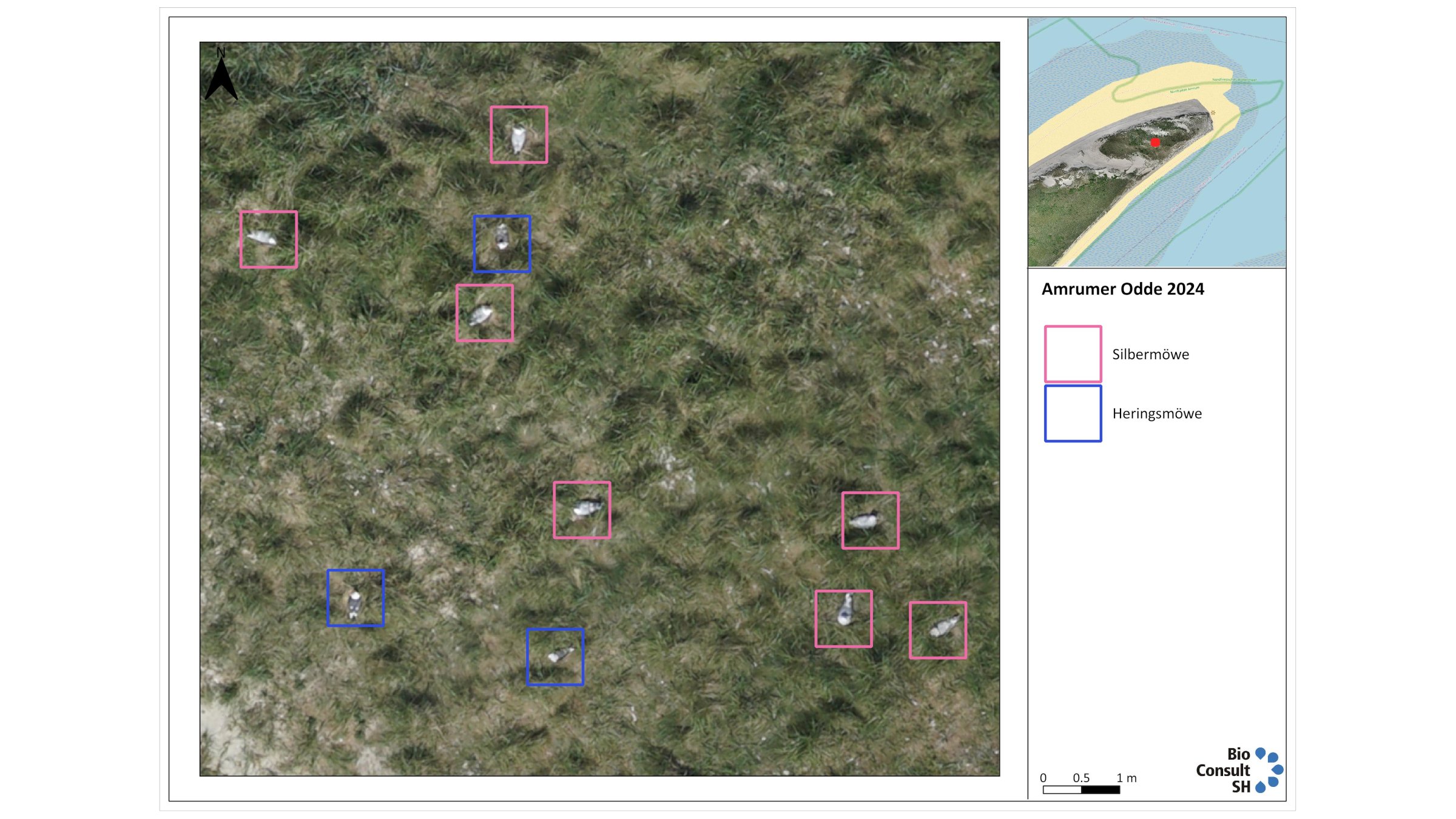On behalf of the Schleswig-Holstein National Park Administration, our drone team has monitored various breeding colonies in the Schleswig-Holstein Wadden Sea National Park in recent years. This includes the Amrum Odde, the northern tip of the island of Amrum. Here, herring gulls and lesser black-backed gulls breed in joint colonies.
Over a period of three years (2017 to 2019) and in collaboration with Verein Jordsand, the data collected in drone flights was compared to counts in the field. The results were published and discussed in the current issue of the Corax journal.
The results show that drone-based breeding population surveys of the gulls at the Odde can provide more accurate figures than traditional counts in the field. At the same time, disturbance in the breeding colonies is reduced. Since 2020, the gull breeding populations at Amrum Odde have therefore been counted using drones only.
Here you can find more information about our services and projects regarding drone surveys.

